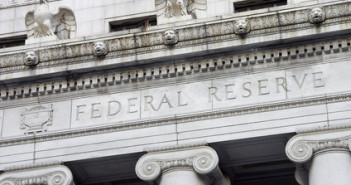While the Fed might not be the only game in town when it comes to dictating price action in financial markets, yesterday served as a reminder as to the substantial influence they do have over traders and investors, as the release of the minutes from the last FOMC meeting sent market participants into a “risk-on†buying frenzy. The minutes were laced with dovish undertones, as several members on the board were worried that the increase in interest rate projections overstated the pace of the potential rise, and that it may give market participants the wrong idea that the Fed had turned less accommodating. In addition, there were a few FOMC participants that were interested in adding a quantitative element to the Fed’s current forward guidance, one that would demonstrate their commitment to achieve price stability when dealing with inflation persistently below their objective. Essentially reiterating Janet Yellen’s speech a few weeks after the FOMC meeting where she promised continued accommodation, the minutes sparked a surge in risk appetite as the Fed put was firmly reestablished, and sent the S&P rallying 1.09%, the DXY crashing into the mid-79s, the VIX crumbling past 14%, and EURUSD shooting into the mid-1.38s.
The Loonie was also a benefactor of the butterfly effect created after the fall-out of the FOMC minutes, with renewed vigor pushing the CAD to a three month high against the USD as expectations for a rate hike in the US were scaled back slightly. USDCAD ran into pretty significant support in the mid-1.08s, and perked questions as to if the voracity of the move could hold given the lack of new material disseminated to markets in regards to the Fed’s position on monetary policy. In addition, leveraged funds and speculative traders have been short USDCAD since the break of 1.10, leaving the application of new short positions potentially vulnerable at these extended levels.
The overnight Asian session failed to display the same exuberance witnessed on Wall Street as a few notable data releases derailed the positive sentiment.  First, machinery orders in Japan fell by 8.8% during the month of February when analysts had only anticipated a drop of 3.0%, and while the data is slightly stale, still highlights the slowdown in demand from businesses leading up the implementation of the tax hike.  The Nikkei finished its trading session unchanged, while USDJPY south from the 102 handle.  Elsewhere in Asia, China’s trade balance in March spiked to a surplus of $7.7bn after a $23bn deficit in February as a result of imports imploding and dropping by 11.3% when compared to the previous twelve months.  The collapse in exports wasn’t as severe as China’s import demand, yet exports fell by 6.6% on a y/o/y basis, missing estimates of a 4.0% rise.  The muted market reaction has been attributed to the realization of participants that there are distortions in the trade numbers due to the over invoices issues of last year; however, this doesn’t sway the fact that China is struggling to find solid ground in 2014, and the economic indicators have been less than optimal.  Despite the dreadful trade balance numbers, the Shanghai Comp was up 1.38%, although copper futures are displaying a slight offer tone as the metal is off by 0.3% this morning.
Heading further west, the Bank of England decided to make no changes to their monetary policy path at the meeting today, electing to keep the benchmark rate unchanged at 0.5% and the asset purchase facility on hold at 375bn pounds.  The decision to stick to the status quo was almost a foregone conclusion heading into the meeting, and thus it’s done little to sway markets today; GBPUSD is slightly weaker, but remains firmly supported in the mid-1.67s.
One of the main focuses for Europe today will be the return of Greece to bond markets, with the periphery EU nation coming out of exile with a 3bn EUR bond offering (up from original government estimates of 2bn EUR due to high demand.) Â The robust order books to snap up Greek debt for yields under 5% has helped periphery spreads narrow in the EU recently, with the decreases in borrowing costs adding an air of risk appetite in the common-currency bloc. Â Also interesting is the fact that 90% of the new Greek issue is going to foreign investors, illustrating there is appetite in the market to own EUR assets. Â As such, the EUR continues to fly high after the Fed minutes yesterday, with EURUSD changing hands in the mid-1.38s.
Heading into the North American open, equity futures are displaying a slight weight to the tape, set to give back a moderate amount of yesterday’s gains.  The bleeding of the DXY has stopped for the time being, and USDCAD has been flirting with an attempt to vault back into the 1.09s after some better than expected US economic data.  Jobless claims over the previous week fell by more than expected to 300k (lowest since May 2007), while import and export prices in March increased by more than expected, underpinning the possibility inflation in the US might begin to shift off its lows.Â
Looking ahead to the remainder of the day, Chinese inflation data is due out this evening, with expectations we’ll see a decent jump in the month of March so the annualized reading shows a 2.5% increase compared to the previous twelve months.  The recent economic data out of China has been mediocre at best (especially considering yesterday’s trade data), but on balance, has kept expectations in check that we won’t seen another large, credit-fueled stimulus from the government; however, tonight’s data will signal how much room the government might have to maneuver should economic activity not develop in a constructive manner. A number south of 2.5% will help support investor appetite for high-yielding assets, as although still unlikely, would signal the Chinese government could get more aggressive with either fiscal or monetary accommodation to make sure they hit their 2014 growth target.Â
Further reading:
Jobless claims
USD/JPY: Trading the University of Michigan Consumer Sentiment



